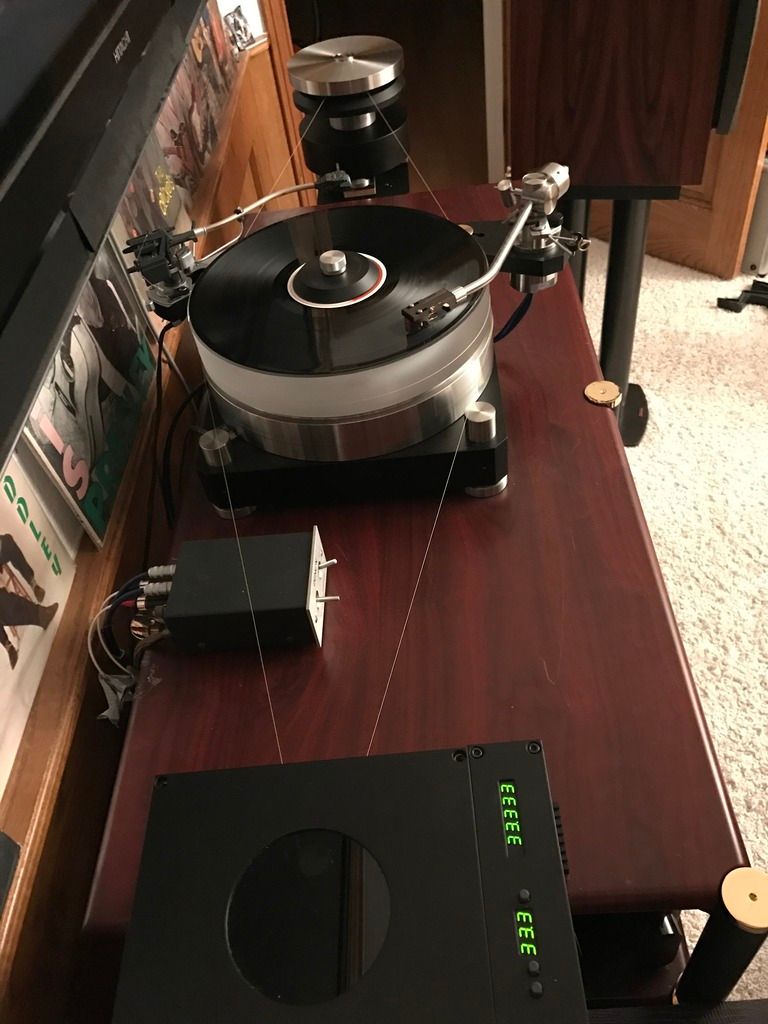Wellington, I posted a few years ago regarding the HS-80 Flywheel, I concur it is an absolute pain in the ass to set it up correctly. I tried every suggestion on this web, from Mirko and others. In the end the solution was purchasing the MS String, I had tried many different types ....but finding the actual MS String ...no issues since. My approach is to keep the length on the controller and the flywheel the same and to move the controller not not flywheel to get the correct speed and maintain it. Since my previous post I had Mirko clone the RY5000 controller and shoehorn into the box a Phoenix Engineering RoadRunner Tach and the PSU. I believe it is -todate- the only one he has built ...and I must say I absolutely love it. I get and maintain 33.333. Having said that I concur with 'Kipdent', I cannot hear a sonic difference utilizing the HS80 vs not, but it certainly looks cool ! LOL. I have attached a pic ....

Micro Seiki RX5000 handmade clone (double stacked), Micro Seiki Flywheel, Fidelity Research FR 64S, SME3009 S3, DynAudio C1, Merrill Audio Thor MonoBlocks, VAC Signature MKII, Keith Monk RCM, Denon Au 320 SUT, Technics SL1200 (KABUSA) Marantz 2330b
|